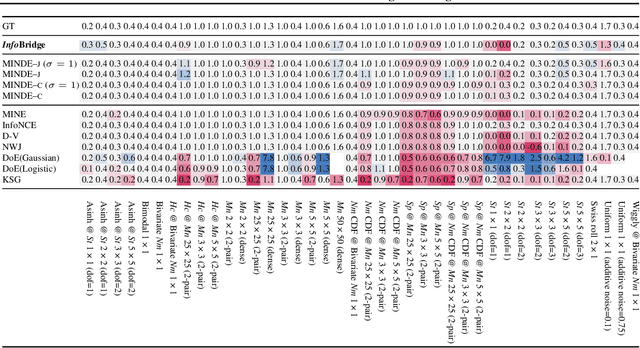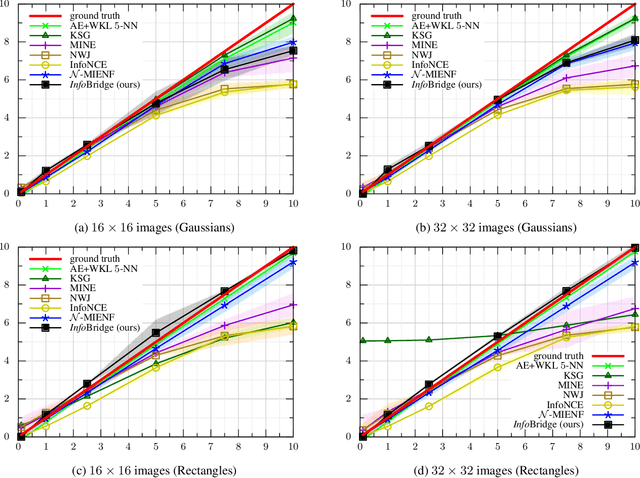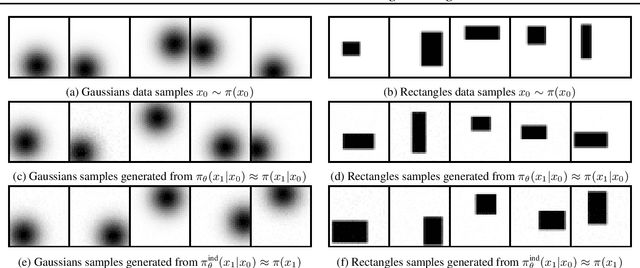Sergei Kholkin
Sampling from Energy distributions with Target Concrete Score Identity
Oct 27, 2025Abstract:We introduce the Target Concrete Score Identity Sampler (TCSIS), a method for sampling from unnormalized densities on discrete state spaces by learning the reverse dynamics of a Continuous-Time Markov Chain (CTMC). Our approach builds on a forward in time CTMC with a uniform noising kernel and relies on the proposed Target Concrete Score Identity, which relates the concrete score, the ratio of marginal probabilities of two states, to a ratio of expectations of Boltzmann factors under the forward uniform diffusion kernel. This formulation enables Monte Carlo estimation of the concrete score without requiring samples from the target distribution or computation of the partition function. We approximate the concrete score with a neural network and propose two algorithms: Self-Normalized TCSIS and Unbiased TCSIS. Finally, we demonstrate the effectiveness of TCSIS on problems from statistical physics.
InfoBridge: Mutual Information estimation via Bridge Matching
Feb 03, 2025



Abstract:Diffusion bridge models have recently become a powerful tool in the field of generative modeling. In this work, we leverage their power to address another important problem in machine learning and information theory - the estimation of the mutual information (MI) between two random variables. We show that by using the theory of diffusion bridges, one can construct an unbiased estimator for data posing difficulties for conventional MI estimators. We showcase the performance of our estimator on a series of standard MI estimation benchmarks.
Diffusion & Adversarial Schrödinger Bridges via Iterative Proportional Markovian Fitting
Oct 03, 2024Abstract:The Iterative Markovian Fitting (IMF) procedure based on iterative reciprocal and Markovian projections has recently been proposed as a powerful method for solving the Schr\"odinger Bridge problem. However, it has been observed that for the practical implementation of this procedure, it is crucial to alternate between fitting a forward and backward time diffusion at each iteration. Such implementation is thought to be a practical heuristic, which is required to stabilize training and obtain good results in applications such as unpaired domain translation. In our work, we show that this heuristic closely connects with the pioneer approaches for the Schr\"odinger Bridge based on the Iterative Proportional Fitting (IPF) procedure. Namely, we find that the practical implementation of IMF is, in fact, a combination of IMF and IPF procedures, and we call this combination the Iterative Proportional Markovian Fitting (IPMF) procedure. We show both theoretically and practically that this combined IPMF procedure can converge under more general settings, thus, showing that the IPMF procedure opens a door towards developing a unified framework for solving Schr\"odinger Bridge problems.
Adversarial Schrödinger Bridge Matching
May 23, 2024



Abstract:The Schr\"odinger Bridge (SB) problem offers a powerful framework for combining optimal transport and diffusion models. A promising recent approach to solve the SB problem is the Iterative Markovian Fitting (IMF) procedure, which alternates between Markovian and reciprocal projections of continuous-time stochastic processes. However, the model built by the IMF procedure has a long inference time due to using many steps of numerical solvers for stochastic differential equations. To address this limitation, we propose a novel Discrete-time IMF (D-IMF) procedure in which learning of stochastic processes is replaced by learning just a few transition probabilities in discrete time. Its great advantage is that in practice it can be naturally implemented using the Denoising Diffusion GAN (DD-GAN), an already well-established adversarial generative modeling technique. We show that our D-IMF procedure can provide the same quality of unpaired domain translation as the IMF, using only several generation steps instead of hundreds.
Light and Optimal Schrödinger Bridge Matching
Feb 05, 2024



Abstract:Schr\"odinger Bridges (SB) have recently gained the attention of the ML community as a promising extension of classic diffusion models which is also interconnected to the Entropic Optimal Transport (EOT). Recent solvers for SB exploit the pervasive bridge matching procedures. Such procedures aim to recover a stochastic process transporting the mass between distributions given only a transport plan between them. In particular, given the EOT plan, these procedures can be adapted to solve SB. This fact is heavily exploited by recent works giving rives to matching-based SB solvers. The cornerstone here is recovering the EOT plan: recent works either use heuristical approximations (e.g., the minibatch OT) or establish iterative matching procedures which by the design accumulate the error during the training. We address these limitations and propose a novel procedure to learn SB which we call the \textbf{optimal Schr\"odinger bridge matching}. It exploits the optimal parameterization of the diffusion process and provably recovers the SB process \textbf{(a)} with a single bridge matching step and \textbf{(b)} with arbitrary transport plan as the input. Furthermore, we show that the optimal bridge matching objective coincides with the recently discovered energy-based modeling (EBM) objectives to learn EOT/SB. Inspired by this observation, we develop a light solver (which we call LightSB-M) to implement optimal matching in practice using the Gaussian mixture parameterization of the Schr\"odinger potential. We experimentally showcase the performance of our solver in a range of practical tasks. The code for the LightSB-M solver can be found at \url{https://github.com/SKholkin/LightSB-Matching}.
 Add to Chrome
Add to Chrome Add to Firefox
Add to Firefox Add to Edge
Add to Edge